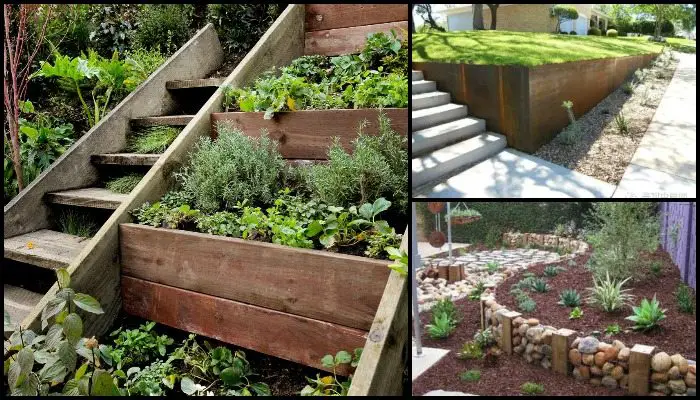Owning a property with slopes would seem to limit the space for your garden or other outdoor functions that you can enjoy. People will tell you areas located on a slope are not the best investment. Even experts will concede that the landscape design and improvement of such areas require additional labor and financial costs.

That’s why most people planning to buy a property have serious considerations when they see a sloping plot. Thanks to retaining walls, however, you can do so much more with the sloping property. Not only does it let you hold back soil, but it can also be an opportunity to landscape your area by letting you maximize its use.
By building retaining walls, you can create small flat spaces that you can utilize for growing more plants, set up space for your outdoor furniture, or provide an outdoor play area for the kids.
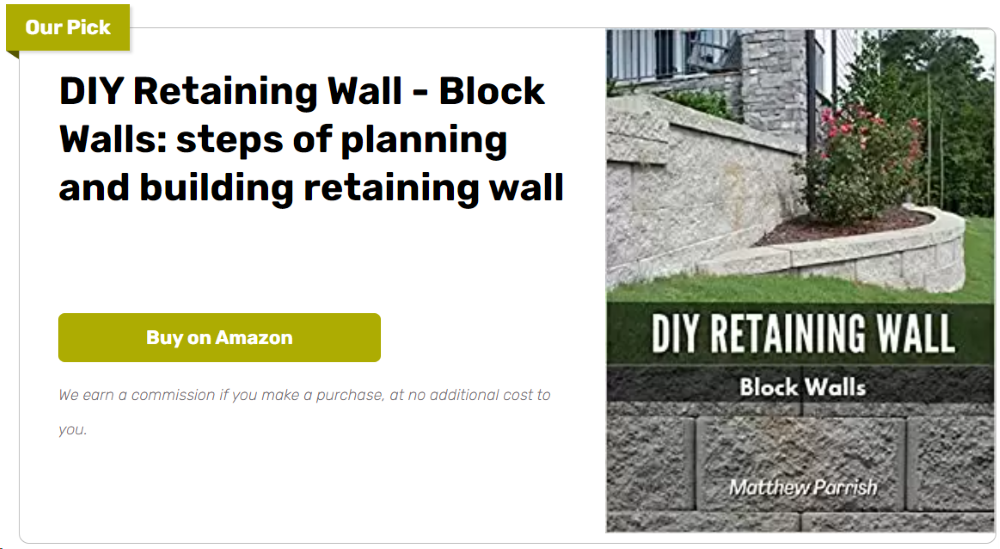
Now although retaining walls seem to be purely utilitarian, they can make up a big part of your yard’s appearance. They are usually very visible and massive, so it is important to choose the best material that would complement or blend in well with the look of your home or the entire property.
Below is a list of retaining wall ideas featuring the different materials that you can use. Some make longer-lasting structures than others, but they all serve the purpose well. If you are dealing with a small slope – meaning retaining walls are only four feet and below – then you shouldn’t have any problems with whichever material you wish to use. However, if we are talking about retaining walls higher than four feet, then it would be best to consult an engineer and to have professionals build it for you.
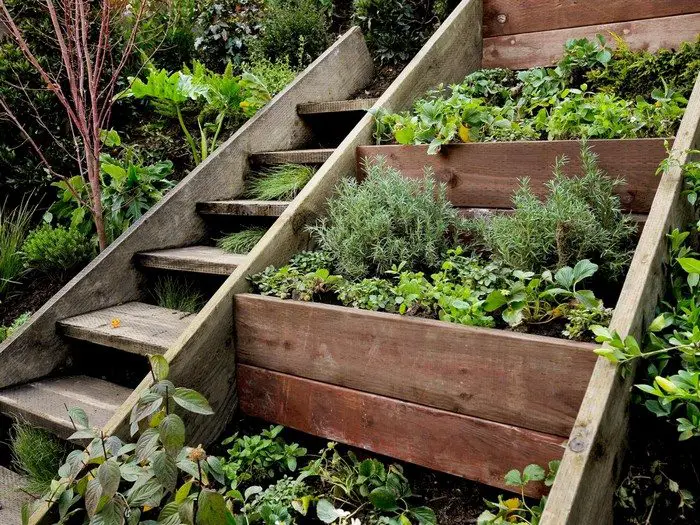
Do you have a sloped area in your property that could use a retaining wall? Then have a look at the ideas we have for you to help you visualize how you want your landscape to look!
8 Retaining Wall Ideas
Click on any image to start the lightbox display. Use your Esc key to close the lightbox.![]()
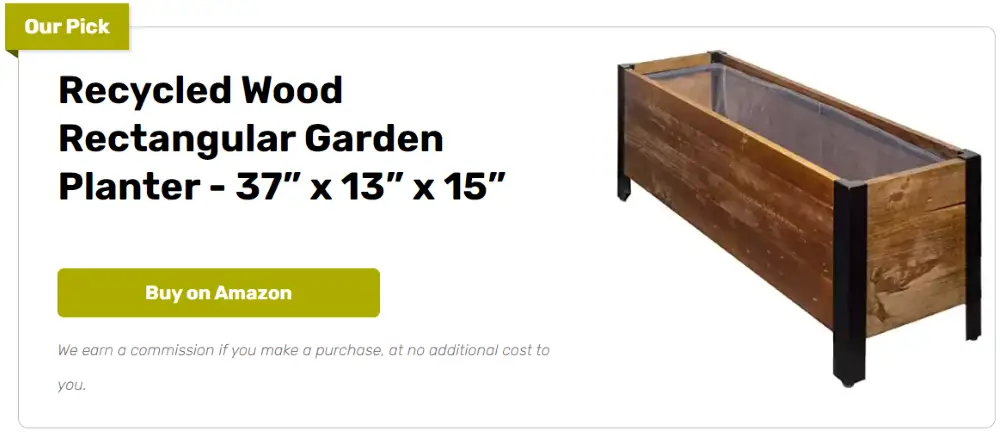
Gabion
A Gabion retaining wall features a highly durable and visually unique design, ideal for stabilizing slopes and enhancing aesthetic appeal in landscape architecture. It consists of rectangular wire mesh baskets filled with rocks, stones, or other hard materials. The open structure allows for water drainage, preventing hydrostatic pressure buildup behind the wall.
Gabions are flexible and can adapt to ground movement, making them suitable for areas prone to shifting soils. Their natural look helps them blend seamlessly with the environment, making them a popular choice for both functional and decorative purposes.
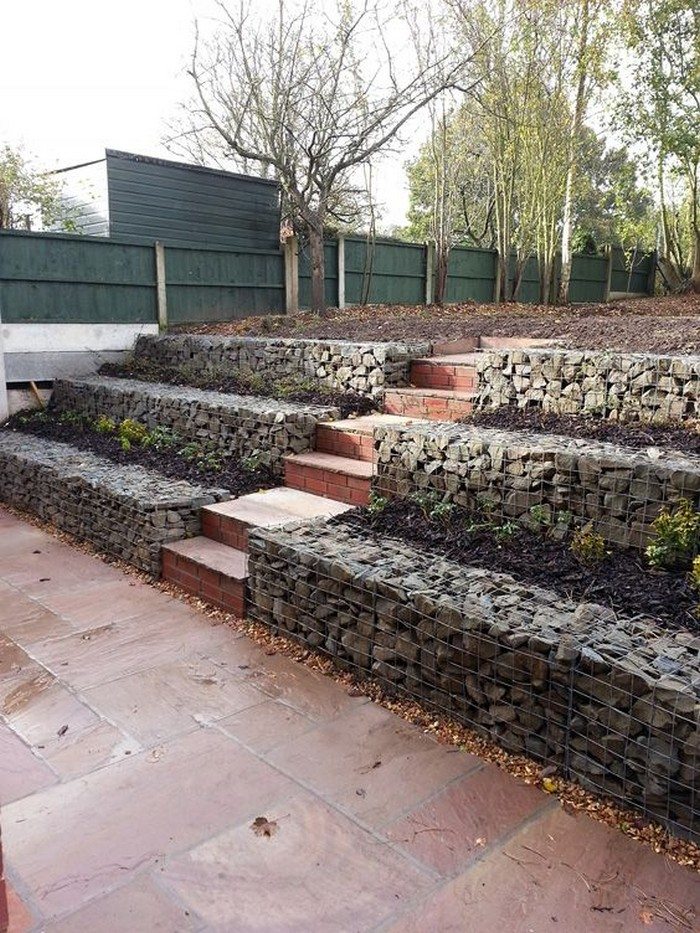

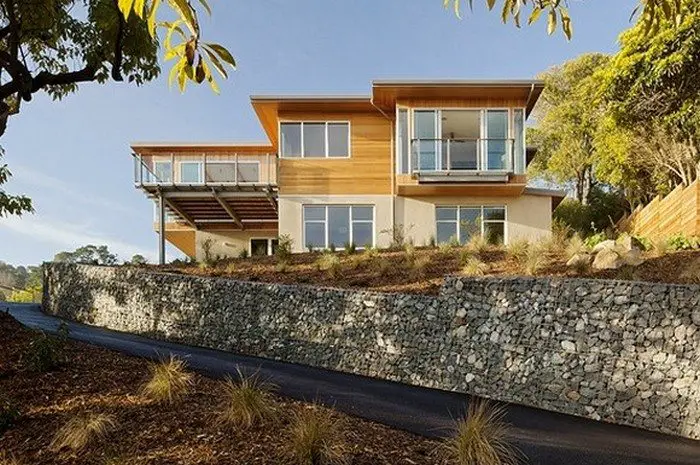
Railway Sleepers
The Railway Sleepers wall is a rustic and cost-effective solution for garden landscapes and terraced yards. Made from repurposed wooden railway sleepers, these walls add a warm, natural charm to any outdoor space.
They are relatively easy to construct and can be laid horizontally or vertically, secured with steel rods or timber stakes. While offering a robust structural support, they do require treatment to resist moisture and termites. Railway sleepers are perfect for creating raised beds or borders, contributing to a structured yet organic garden aesthetic.

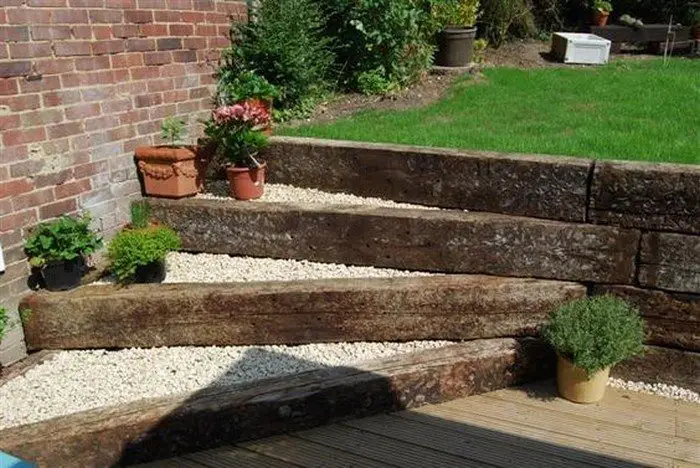
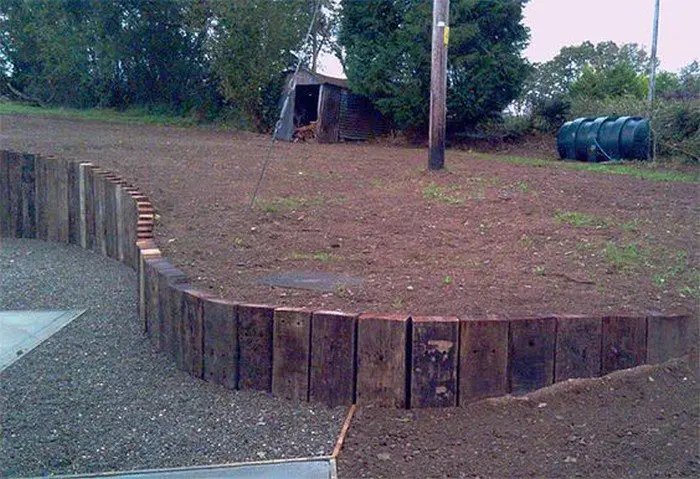
Block Retaining Wall
Block retaining walls are a sturdy and modular option, commonly used for both residential and commercial landscaping projects. These walls are constructed from precast concrete blocks that interlock without the need for mortar, facilitating easier and faster installation.
The blocks come in various colors, shapes, and textures, allowing for versatile design options that can match any property’s exterior décor. They are engineered for strength and durability, with a focus on retaining large amounts of soil and managing heavy loads. Proper installation includes geogrids for reinforcement and adequate drainage systems to ensure long-term stability and functionality.
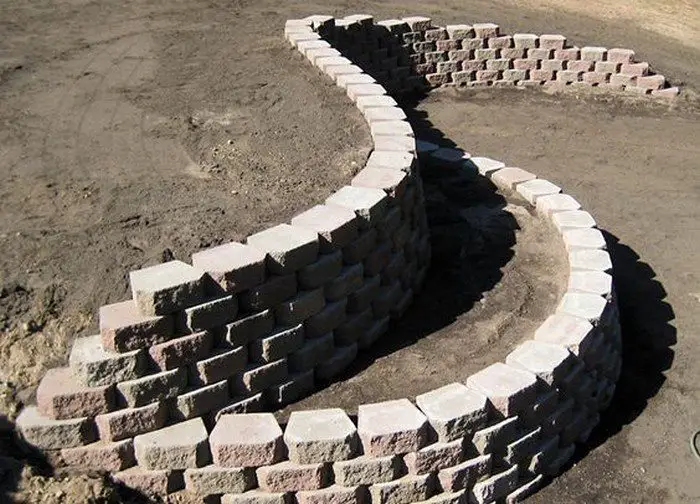

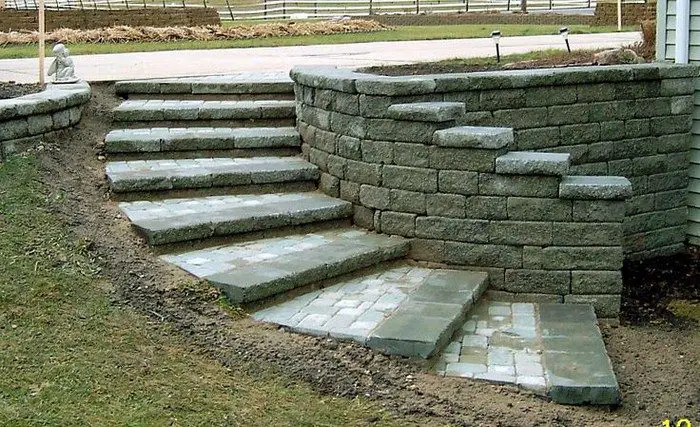
Corten Steel
A Corten Steel retaining wall offers a modern and striking aesthetic to any landscaping project. Corten Steel, also known as weathering steel, is prized for its rustic, reddish-brown protective patina that forms when exposed to the elements.
This patina not only provides a distinctive appearance but also adds a layer of corrosion resistance to the steel. Corten Steel walls are durable and require minimal maintenance, making them a sustainable choice for retaining soil in gardens, yards, and commercial properties. Their slim profile and linear design lend a contemporary look that can serve as a focal point or a subtle structural feature.
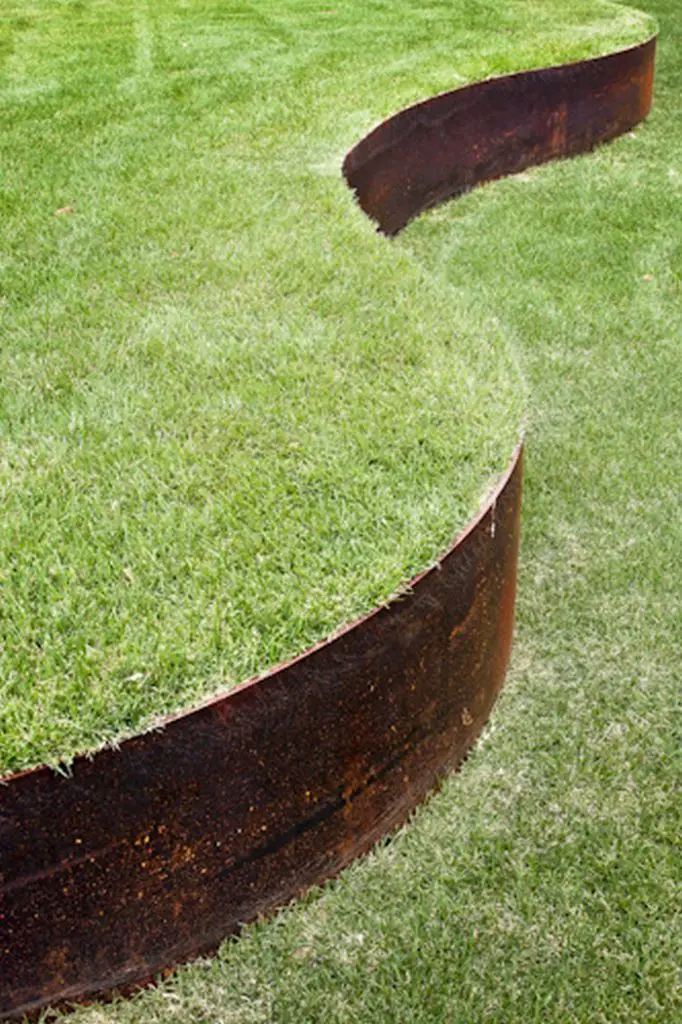
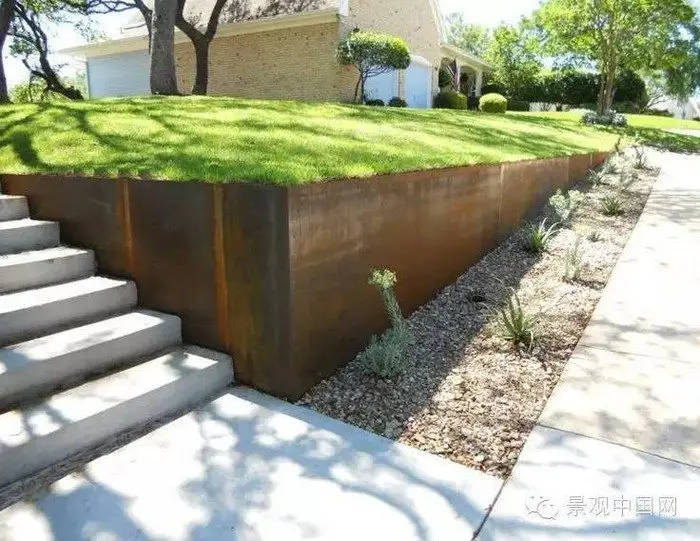
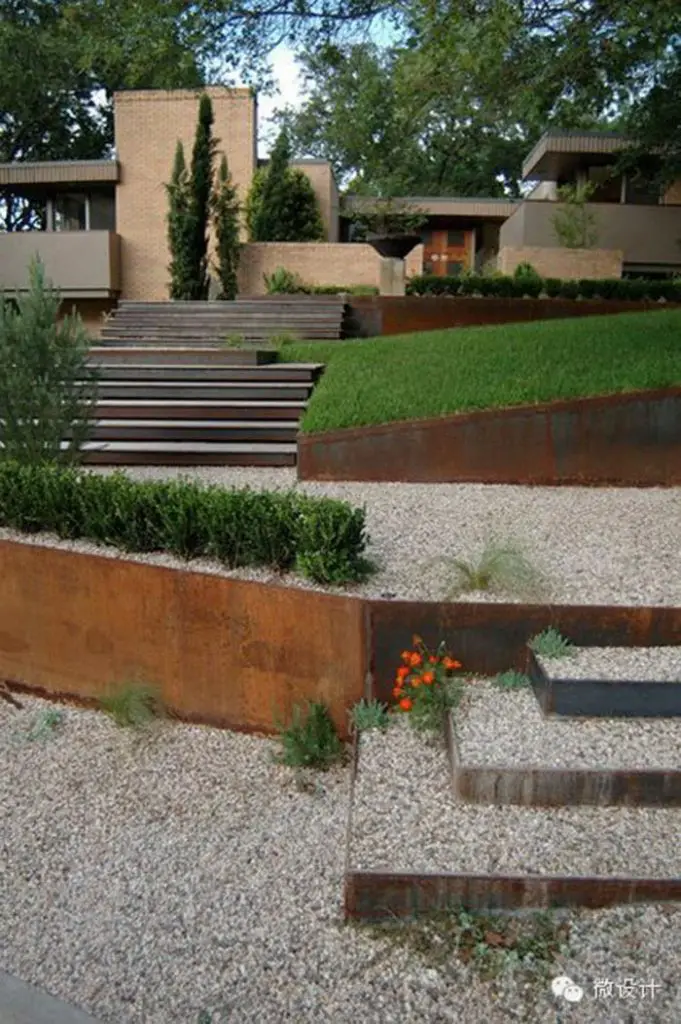
Corrugated Steel and Timber
The Corrugated Steel and Timber retaining wall combines the industrial strength of steel with the natural beauty of wood, creating a visually appealing and functional landscape element. This type of wall uses corrugated steel panels as the primary structural component, providing excellent resistance to soil pressure and erosion.
The panels are often framed or accented with timber, enhancing the wall’s aesthetic appeal and adding a touch of warmth to the design. This hybrid construction not only ensures longevity and sturdiness but also integrates well with a variety of landscaping styles, from modern to rustic.
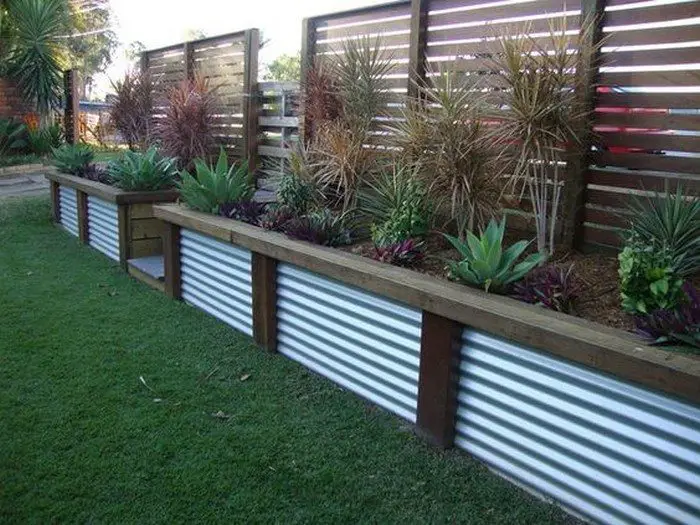
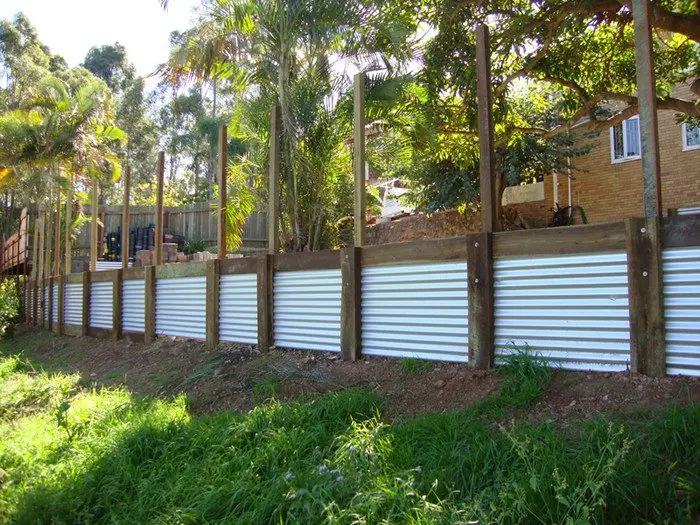
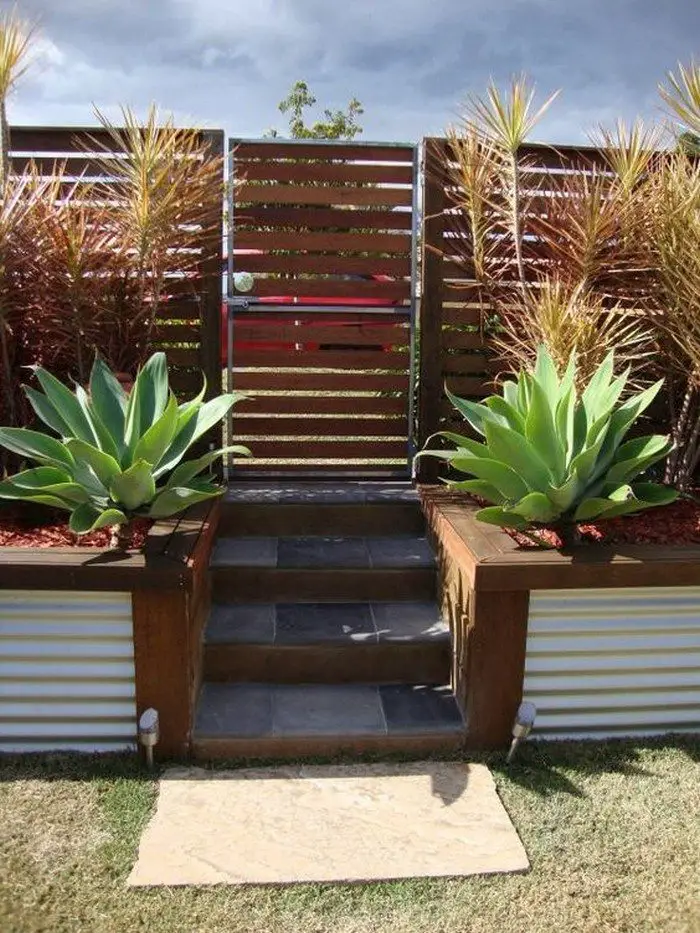
Free-Form Boulder Retaining Wall
Free-Form Boulder retaining walls are ideal for naturalistic landscapes, where the aim is to mimic the organic forms of nature. These walls are constructed using large, irregularly shaped boulders, stacked securely to retain soil while offering a rugged, natural look.
The random placement of the boulders requires skill to ensure structural stability, but the result is a wall that appears as though it has formed naturally over time. Free-Form Boulder walls are particularly suitable for mountainous or rural settings, and they provide excellent drainage, making them functional as well as aesthetically pleasing.
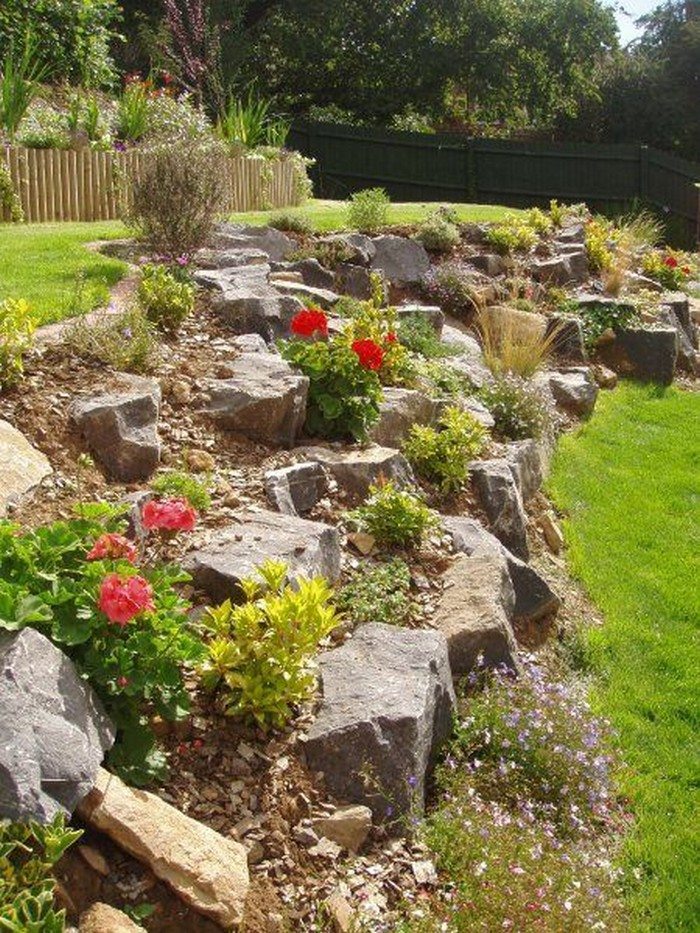
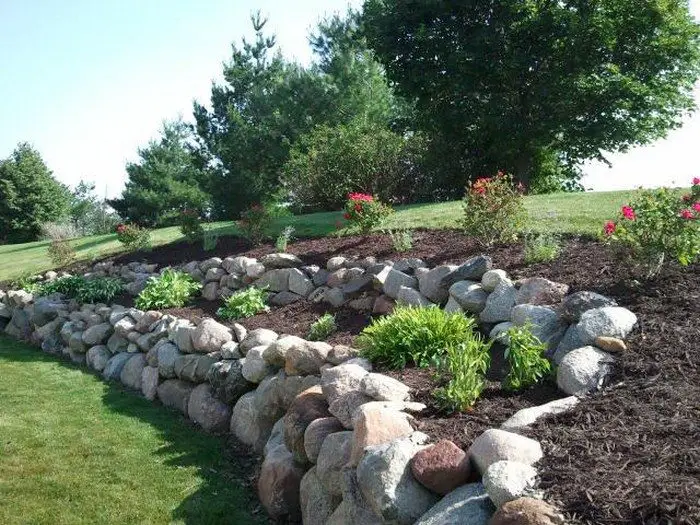
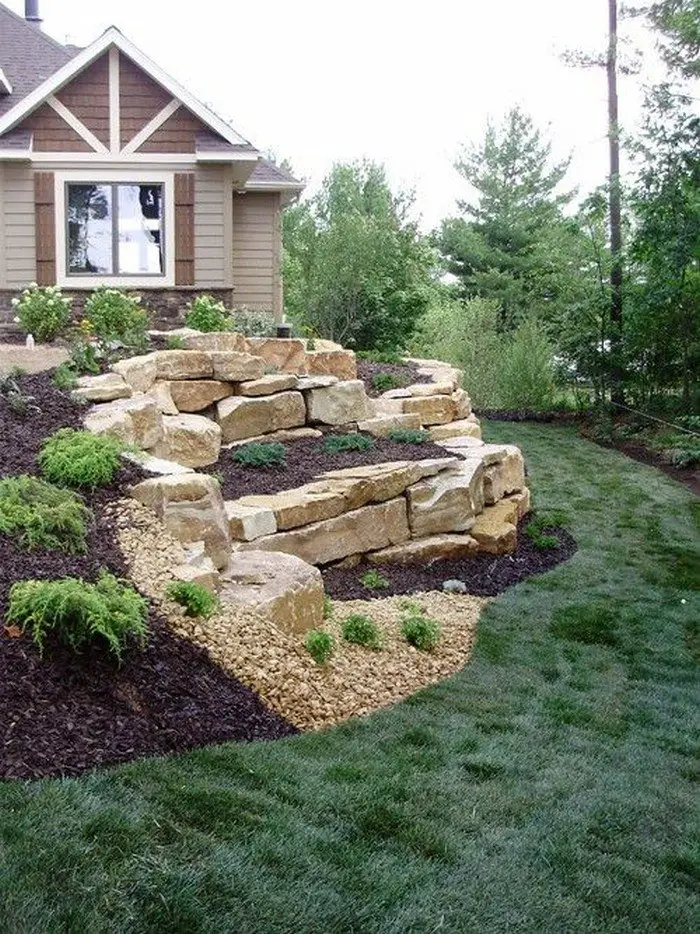
Concrete
Concrete retaining walls provide a robust and permanent solution for controlling erosion and managing soil on steep grades. These walls are constructed from poured concrete, which is cast in forms on-site to suit the landscape’s specific contours and needs.
This method ensures a highly durable wall capable of supporting large volumes of soil, making it ideal for both residential and commercial applications. Concrete walls can be finished with a variety of textures and colors to blend with or enhance the surrounding environment.
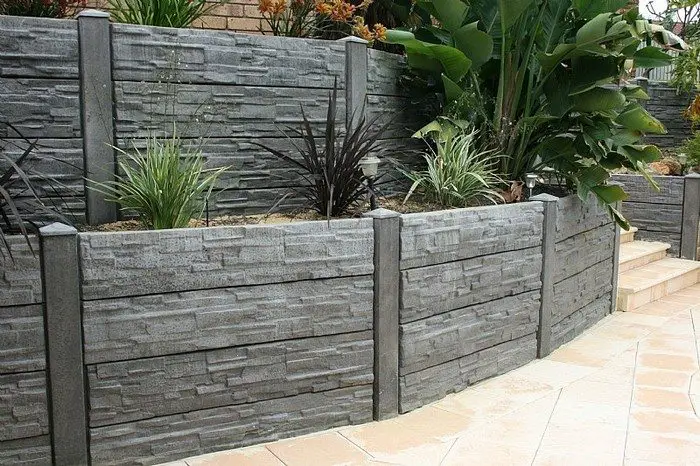
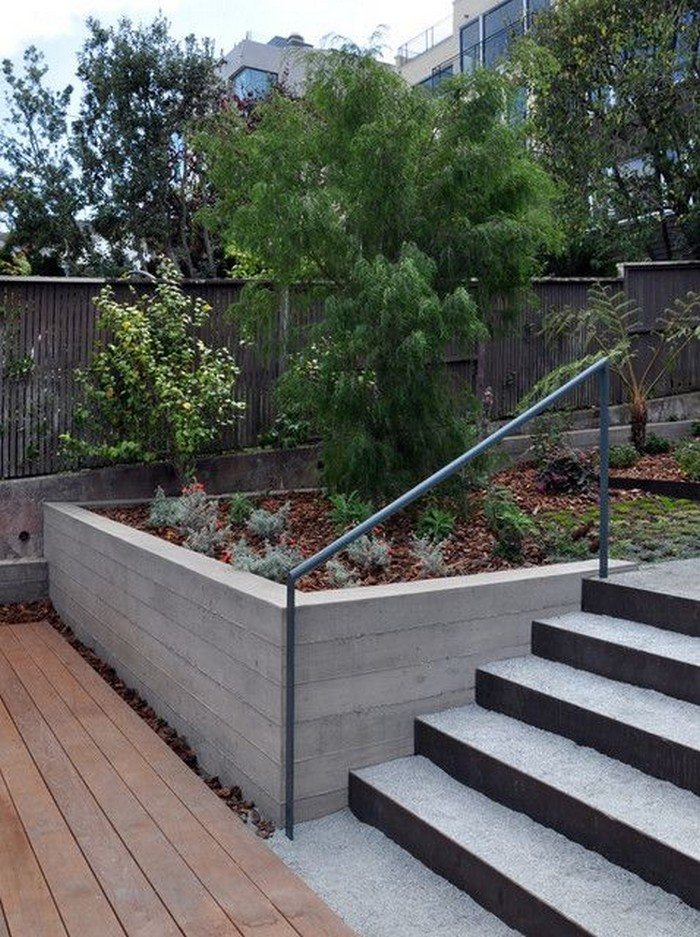
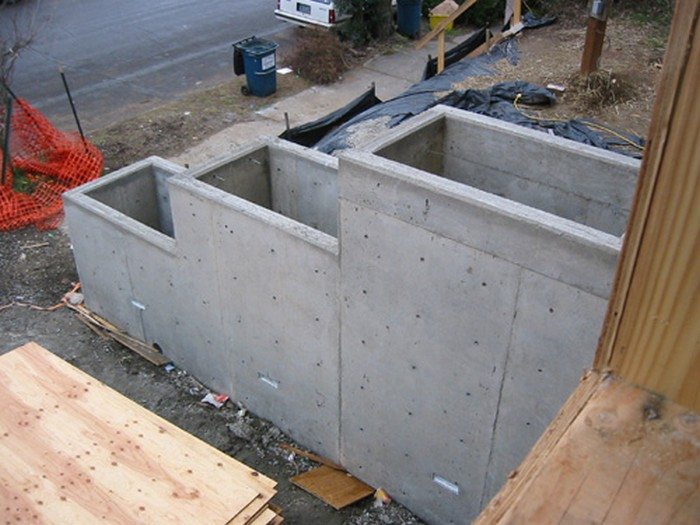
Raised Garden Beds
Raised garden beds constructed with retaining walls elevate the gardening space, making it easier to manage and more accessible. Raised garden bed walls not only help in defining the garden area but also improve soil drainage and reduce weed growth.
They are particularly beneficial for gardeners looking to improve soil conditions as they can be filled with a tailored soil mix. This type of retaining wall adds structure to the landscape and can be designed to create visually appealing patterns and practical growing spaces.

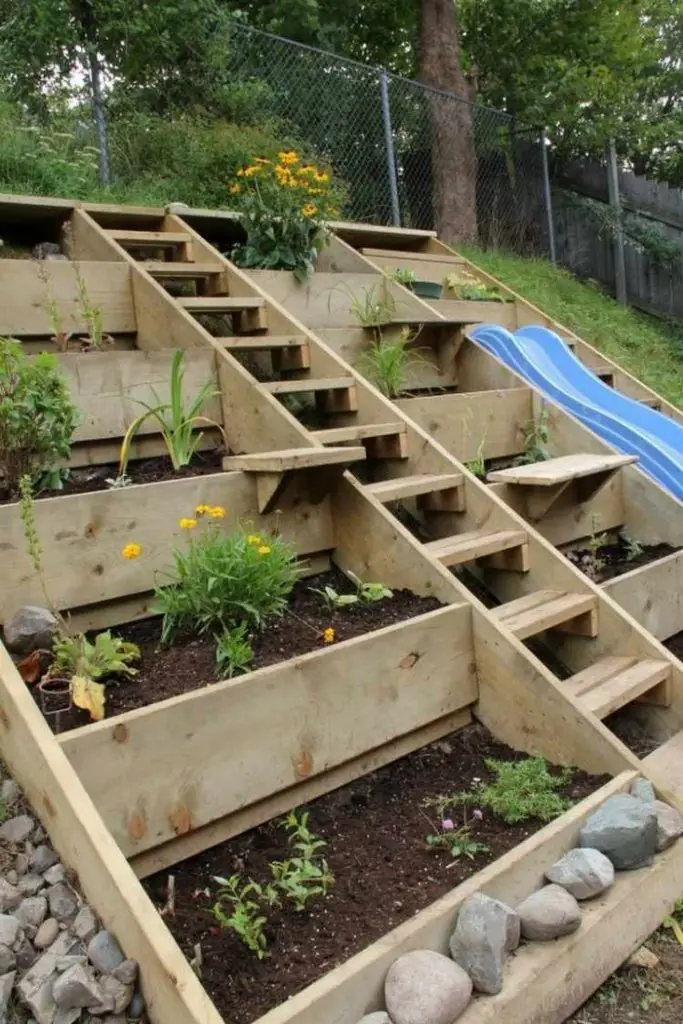
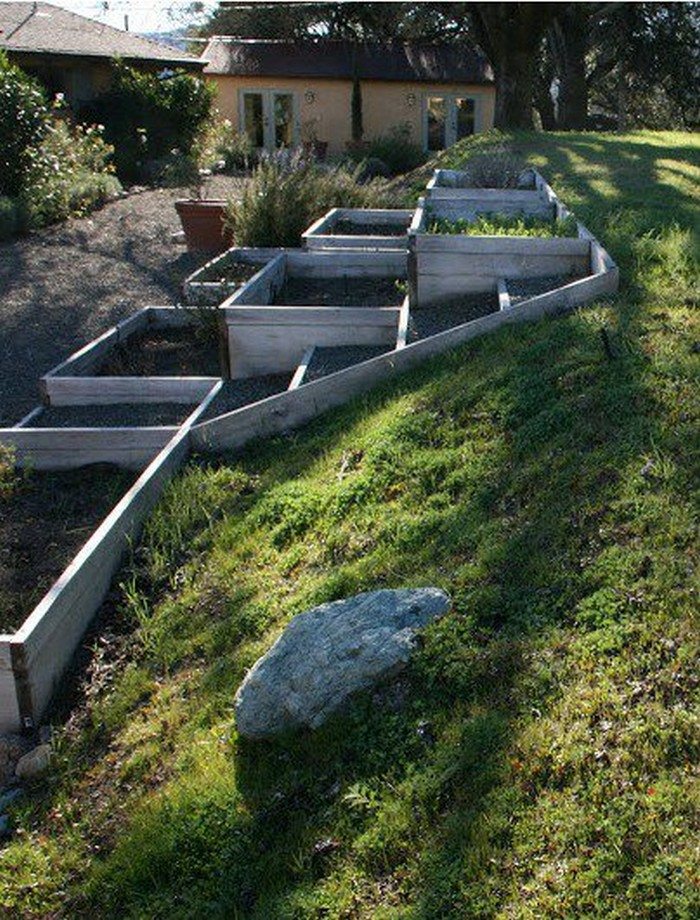
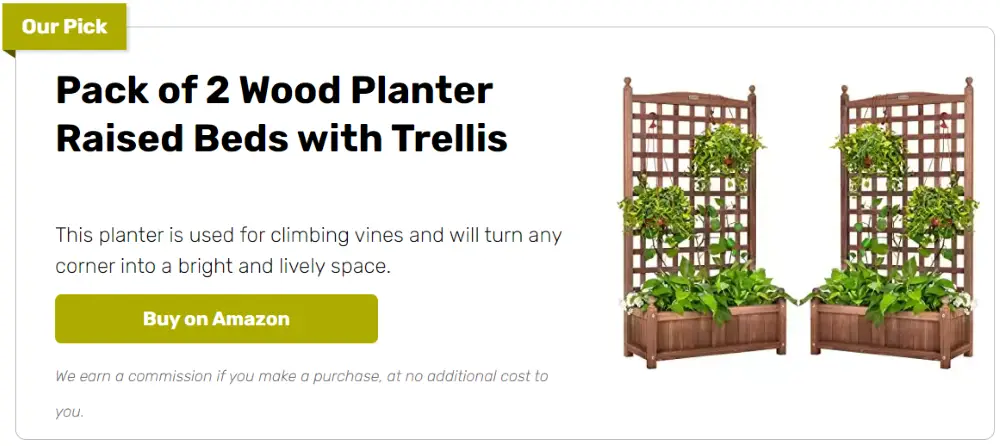
Longevity and Maintenance of Retaining Walls
Retaining walls are vital for managing landscapes, especially in sloped areas, but their longevity and performance depend significantly on the materials used and maintenance practices. Properly designed and maintained retaining walls can last for decades, serving not only as practical landscape features but also as aesthetic enhancements to your property.
Material Durability
The choice of material has a profound impact on the lifespan of a retaining wall. For instance:
- Concrete and Stone Walls: These materials are highly durable, with a lifespan often exceeding 50 years if constructed properly. They withstand harsh weather conditions and heavy soil pressures well.
- Corten Steel: Known for its weathering properties, Corten steel can last between 40 to 50 years. Its rust-like appearance from the weathering process actually protects the steel from further corrosion.
- Wood: Timber walls, especially those made from treated wood or naturally resistant species like cedar, can last around 20 years. However, they are more susceptible to rot and insect damage than other materials.
- Gabion Walls: Composed of stones encased in wire mesh, gabion walls are extremely durable, often lasting 50 to 60 years. Their lifespan can extend with proper filling material and rust-resistant wire.
Maintenance Tips
Regular maintenance can significantly extend the life of a retaining wall, regardless of the material:
- Inspection: Conduct periodic inspections to check for signs of wear and tear, such as cracks, bulges, or leaning. These signs could indicate structural issues that need addressing to prevent wall failure.
- Drainage: Ensure that drainage systems such as weep holes or drainage tiles remain clear and functional. Poor drainage is a common cause of retaining wall failure due to hydrostatic pressure buildup behind the wall.
- Vegetation Control: While some vegetation can help stabilize the wall, invasive roots can cause damage. Regularly clear any unwanted plants growing near the wall.
- Repair: Address minor repairs promptly to avoid more significant problems later. This includes fixing small cracks, replacing displaced stones or blocks, and managing erosion at the wall base.
Long-Term Care
For long-term care, consider the environment in which the wall is built. Factors such as soil type, climate, and exposure to elements like saltwater can affect maintenance schedules and repair needs. Additionally, consult with a structural engineer or a landscape professional if major issues arise, as these could require specialized interventions to ensure the wall’s integrity and safety.
By choosing the right materials and adhering to regular maintenance practices, your retaining wall can continue to serve its functional and aesthetic purpose for many years.
Conclusion
Retaining walls are essential for managing sloped landscapes and enhancing property aesthetics. They require careful selection of materials and regular maintenance to ensure longevity and stability. Ultimately, these structures not only prevent soil erosion but also transform challenging terrains into usable garden spaces.
We have more outdoor projects. Check out our outdoor privacy bench post.

